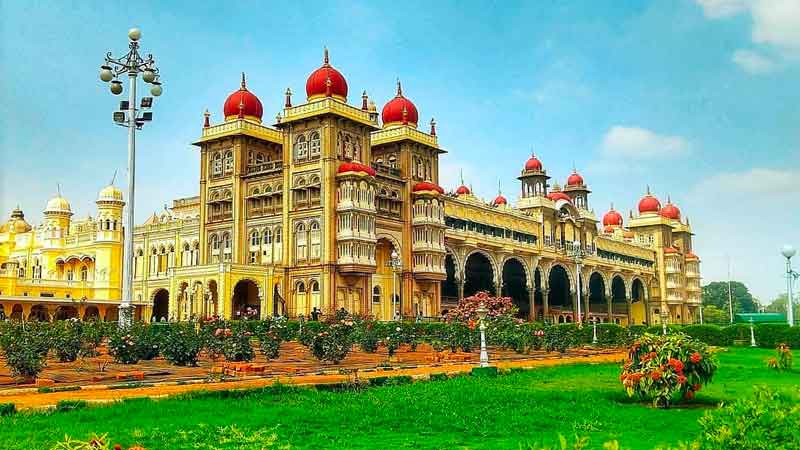
Searching for offbeat destinations in India that have a touch of history. From Amer to Mysore, we’ve curated this bucket list of India’s best forts and palaces for you to visit.
India is known for its diverse cultural heritage and rich history that draw tourists from around the world. They narrate the stories of love, war, victories and failures that define the colourful history of India.
India has a vast and rich cultural history and many forts adorn this beautiful country. There are approximately 1000 or more forts in India. Here we are depicting 38 most admired Forts and Places.
The two most famous forts – the Agra Fort and the Red Fort – are among the UNESCO World Heritage sites in India. Like them, there are a number of hill forts, marine forts, and jungle forts that are perfect for a day out. Explore the ruins – preferably with a guide – and take a walk down history lane.
Standing as proof of a glorious past and excellent craftsmanship, the forts in India are popular tourist attractions today. Spread over the entire country, these forts find mentioned in important history chapters and many of them have interesting stories around them.
38 Most Incredible Forts & Palaces to visit in India
Visiting these marvels would let one explore the mysteries and fascinating histories of the country. So, here is a list of some of the most incredible forts and palaces in India that you must visit:
Red Fort, Delhi- An Inspiring Architecture

The Red Fort holds patriotic significance as it serves as the \official venue of the Republic Day celebration. This is one of the major tourist places in Delhi, with its history dating back to 1638 when Shah Jahan built it. The architecture of the fort projects a mesh of Islamic, Persian, and Timurid styles. Later this style inspired the construction of many gardens and buildings in Delhi, Kashmir, and other places.
Location: Lal Qila, Chandni Chowk, Delhi, PIN- 110006
Famous For Attractive architecture, reflecting a blend of Islamic, Timurid, and Persian styles
Agra Fort, Uttar Pradesh- Former Residence Of Mughals
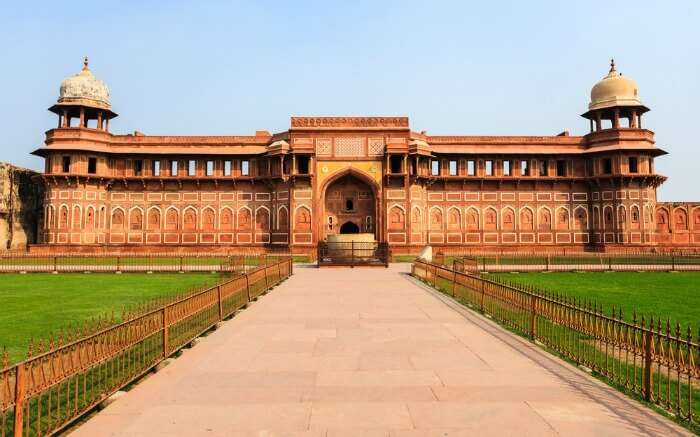
Located on the banks of river Yamuna, the Agra fort is one of the first Mughal forts in India that was built under the commission of Emperor Akbar in 1565 and was later finished by his grandson Shah Jahan. The fort which was built as a military structure is surrounded by a 21.4 m high fortification wall. The British seized it in 1803 and it later became the site of a battle during the Sepoy Mutiny in 1857.
Built of red sandstone, this fort was also one of the first sites in India to get a UNESCO World Heritage Site listing, in 1983. Later following the exit of the British from the country, the fort was taken over by the Indian government and certain parts of it are reserved by the Indian army. Besides, the fort also houses a maze of buildings, including vast underground sections.
Location: Agra Fort, Rakabganj, Agra, Uttar Pradesh, PIN- 282003
Famous For: A sheer depiction of Mughal architecture
Kangra Fort, Himachal Pradesh- A Himalayan Wonder

Located in the beautiful hills, Kangra Fort has massive seven doors with a cobbled and narrow path that leads to the fort. From the inside, you can glance at the Banganga and Manjhi river streams meandering through the verdant hills.
In Akbar’s siege in 1615, Kangra Fort could withstand the attacks, but in 1620 his son took control of the fort. And so, with the passing time, it went under the rules of many kings, including British rulers, until it was destroyed by an earthquake in 1905.
Location: Old Kangra, Kangra, Himachal Pradesh, PIN-176001
Famous For: Majestic surroundings
Amer Fort, Rajasthan- A Timeless Beauty
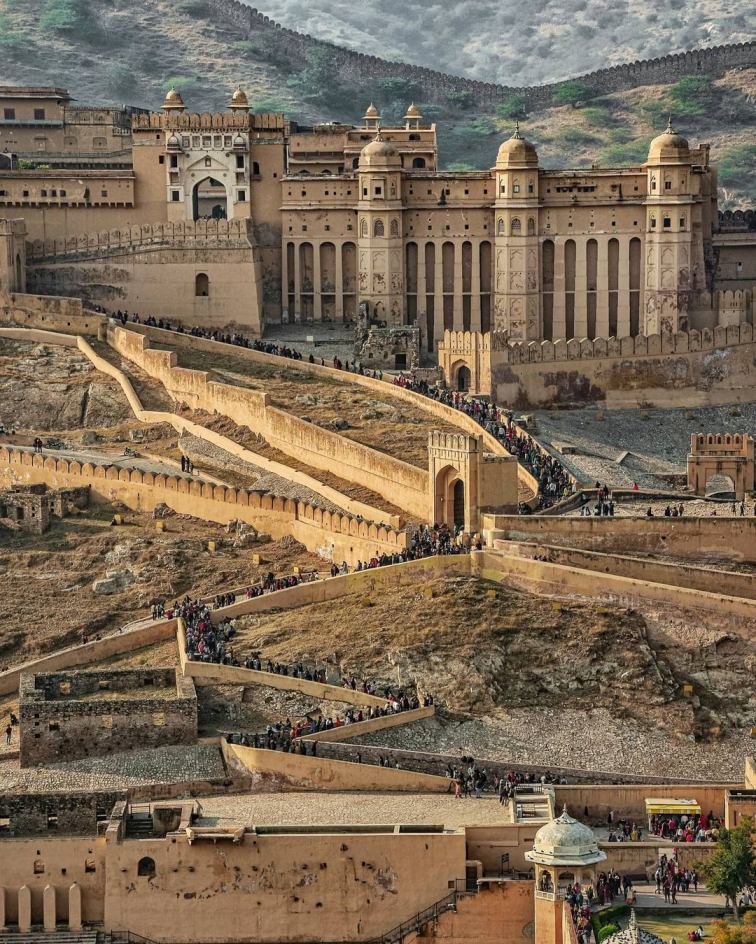
Situated around 11 km from Jaipur, Amber Fort or Amer fort is one of the most famous forts among the many in Rajasthan. Built in 1592 by Raja Man Singh, this fort is made of red sandstone and marble and includes various buildings of prominence like ‘Diwan-i-Aam’, the ‘Sheesh Mahal’ and the ‘Sukh Mahal’.
This 16th-century fort located in Amer, the former capital of the state before Jaipur, has influences from both Hindu and Muslim architecture. It has the Shila Devi Temple and the Ganesh Pol which is a gate that leads to the private palaces of the kings. Besides the fort has many pavilions and halls of great interest and other popular attractions.
Location: Devisinghpura, Amer, Jaipur, Rajasthan, PIN-302001
Famous For: UNESCO World Heritage Site
Junagarh Fort, Rajasthan- Pride Of Thar
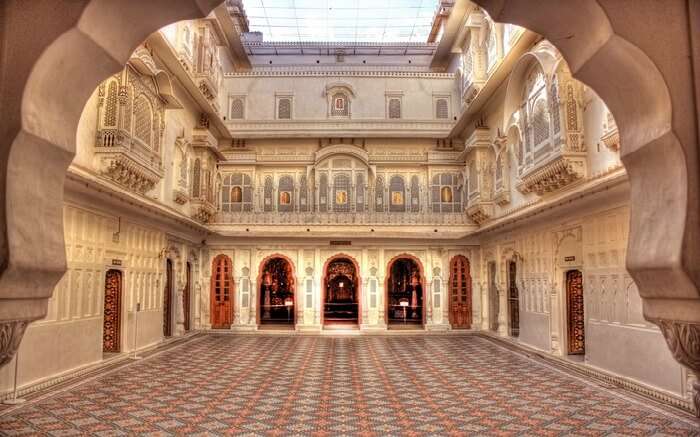
Falling into the category of few forts in Rajasthan that aren’t built on a hill, Junagarh Fort is enveloped by the Thar Desert with the Aravali Range in the backdrop. As per records, the 16th-century fort braved numerous attacks by enemies with just one exception when Kamran Mirza, the second son of Babur attacked and took control for one day.
Location: Bikaner Fort, Bikaner, Rajasthan, PIN-334001
Famous For: Mesmerizing and palatial architecture
Jaigarh Fort, Jaipur- The Fort Of Victory
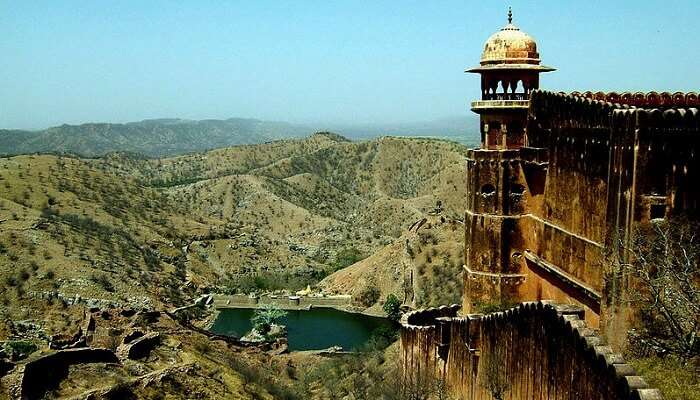
Beautifully perched atop hills in Jaipur, Jaigarh Fort offers some of the most amazing lush green views for one to capture in the memory and their cameras. Designed by a renowned architect named Vidhyadhar, this fort is also named the ‘Fort of Victory’. The deeply rooted history and the magnificent structure of this fort never fail to leave one in awe. In the present day, the fort is home to a massive cannon on wheels, which is also known as ‘Jaivana’ and offers views of the entire city of Jaipur nestled in the lap of green mother nature. Sawai Jai Singh II got the fort built back in the year 1726.
Location: Devisinghpura, Amer, Jaipur, Rajasthan, PIN-302028
Famous For: Magnificent architecture and bewitching views
Nahargarh Fort, Jaipur- A Historic Structure
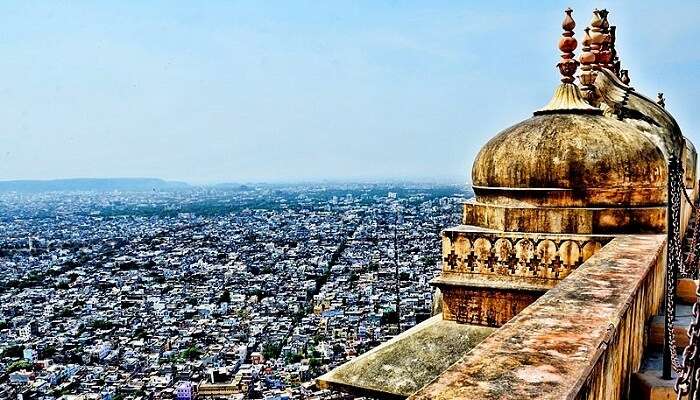
Nahargarh Fort is perhaps one of the priceless treasures of the pink city of Rajasthan. Rich with history and architecture, this fort is among the top forts in India that were once used as a strong defence of the city when combined with the two neighbouring forts. The intricate stonework and the brilliant carvings that one can observe here are truly something that one cannot miss out on. Sitting atop a hill, this fort was also once a retreat for the Royal ladies and is also home to a ladies’ quarters named ‘Zenana’. The Biological Park of this fort is just a cherry on top!
Location: Krishna Nagar, Brahampuri, Jaipur, Rajasthan, PIN-302002
Famous For: Remarkable carvings and astounding stonework
Chittorgarh Fort, Rajasthan
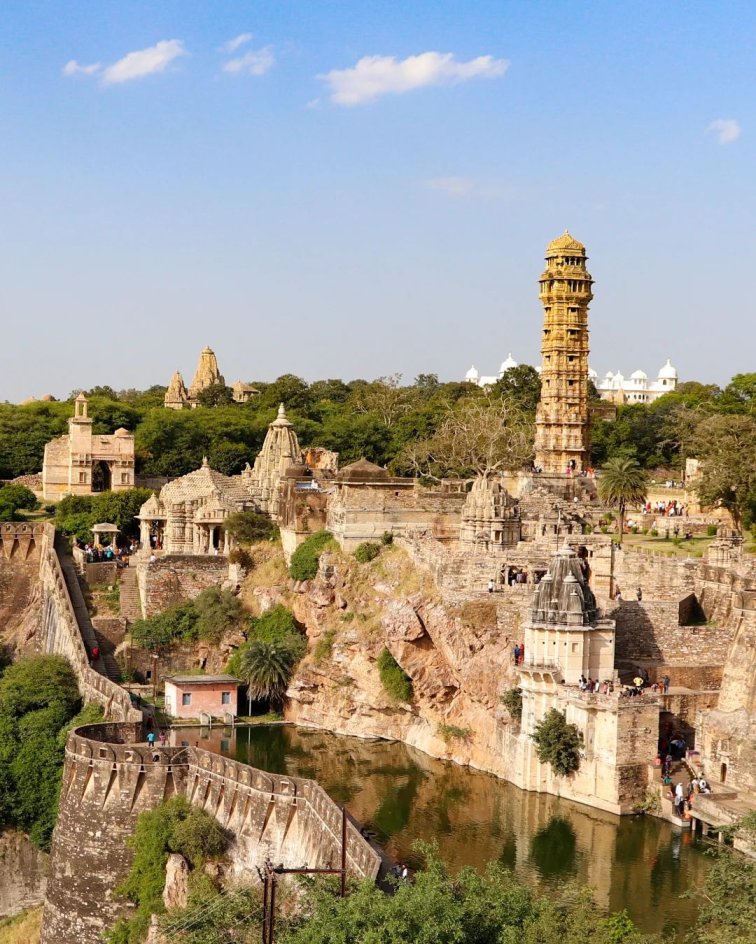
This iconic fort set atop a high hill is considered one of the largest forts in India covering almost 700 acres of land. Known as Chittorgarh or Chittor Fort, was ruled by the Mewar Kings for almost eight centuries before Mughal Emperor Akbar took over.
The fort houses several magnificent monuments like old palaces, temples, towers, and a reservoir, some unfortunately ravaged over centuries. One among them is the famous Vijay Stambha (Tower of Victory) which offers a gorgeous view of the city around.
Location: Chittoor Fort Road, Chittorgarh, Rajasthan, PIN-312001
Famous For: Encompasses a vast area of 700 acres along with 22 water bodies.
Mehrangarh Fort, Jodhpur- Blue City
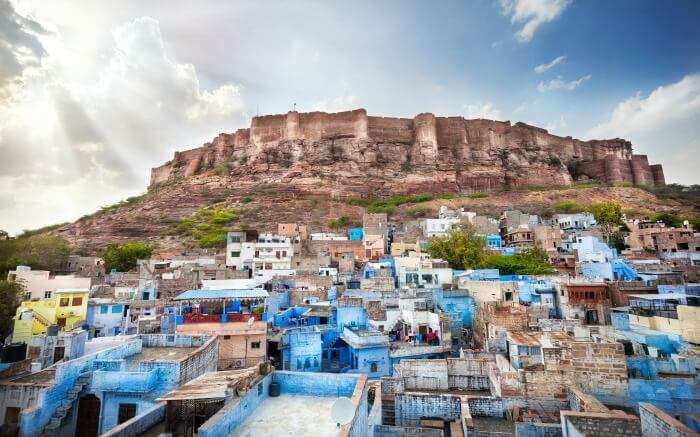
Standing strong and tall above the Blue City Jodhpur, Mehrangarh Fort has its history dating back to 1460, when Rao Jodha commissioned its construction. Like other forts in Rajasthan, it is a treat to the eyes. It is also listed among the top tourist places in Jodhpur.
Location: The Fort Rd, Jodhpur, Rajasthan, PIN-342006
Famous For: Historical significance
Jaisalmer Fort, Jaisalmer- The Golden Fort
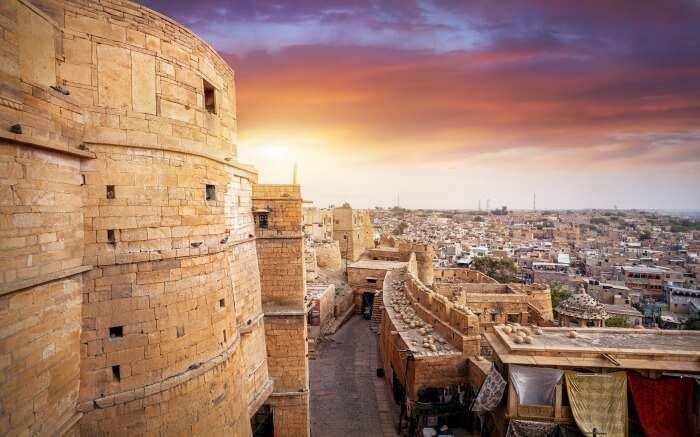
Jaisalmer Fort, also known as Sonar Quila or the Golden Fort, dominates the landscape of the city as it sits on a hill. And the name comes from the beige colour of the fort which complements the sandy Thar Desert. It was built in 1156 AD, and until the British Raj, the fort was used as a refuge for the travellers of the Silk Route. Hands down, Jaisalmer Fort is one of the most famous forts in India.
Location: Near Gopa Chauk, Khejer Para, Manak Chowk, Amar Sagar Pol, Jaisalmer, Rajasthan, PIN-345001
Famous For: Astounding views
Kumbhalgarh Fort, Udaipur
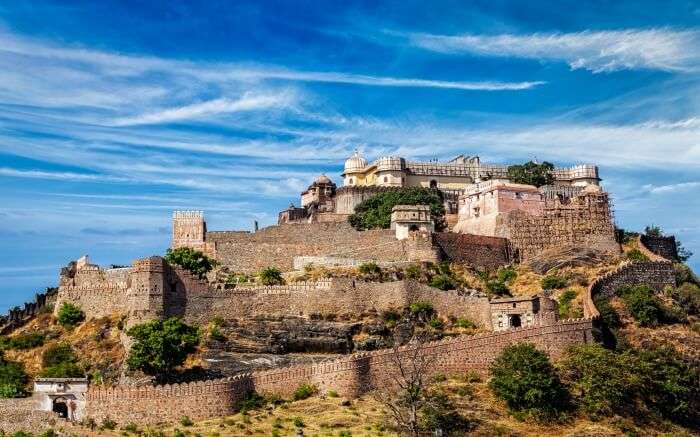
One of the best forts in India, Kumbhalgarh Fort is famous for its 36 km long fortified walls. Badal Mahal – a palace inside the fort is the birthplace of famous warrior Maharana Pratap and offers a panoramic view of the vicinity.
Location: Kumbhalgarh, Rajasthan, PIN-313325
Famous For: 36 km long fortified walls
Ranthambore Fort, Prempura- Fort Amid The Wild
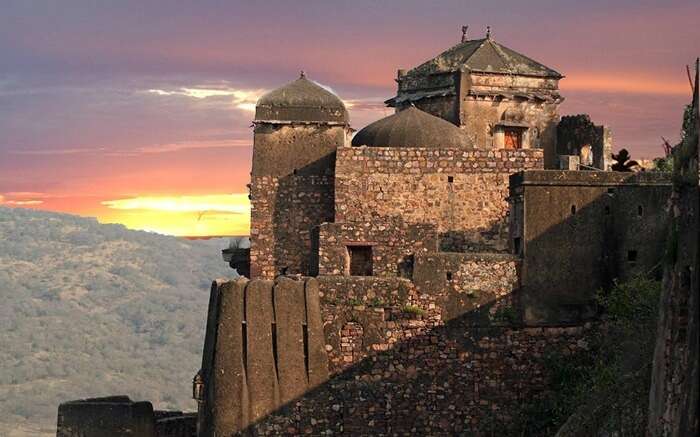
The Ranthambore Fort is located in the former hunting grounds of Jaipur’s rulers, the Ranthambore National Park. Interestingly, there are more than one theories that narrate the history of the fort – one theory says it was built by Chauhan Rulers in 944 CE, the other says it was built in 1110 CE, while the government maintains that it was built in the 10th century. Nevertheless, it is a beauty to behold, especially if you love wildlife.
Location: Ranthambhor Rd, Vigyan Nagar, Sawai Madhopur, Rajasthan, PIN-322001
Famous For: Captivating surroundings
Lohagarh Fort, Bharatpur- An Iron Marvel

Lohagarh Fort has slowly emerged as one of the top tourist destinations in the past years. Sitting in the Bharatpur region of Rajasthan, Lohagarh Fort has witnessed and survived countless battles over its period of existence. This was constructed under the command of Maharaja Suraj Mal and is now an architectural marvel that acts as a magnet for architecture and history buffs. This fort is constructed entirely out of iron and is now a museum for one to revisit the history and witness some magnificent artefacts from up close.
Location: Lohagarh Fort, Gopalgarh, Bharatpur, Rajasthan, PIN-321001
Famous For: One of the top architectural gems of India
Taragarh Fort, Bundi- An Impressive Ruin
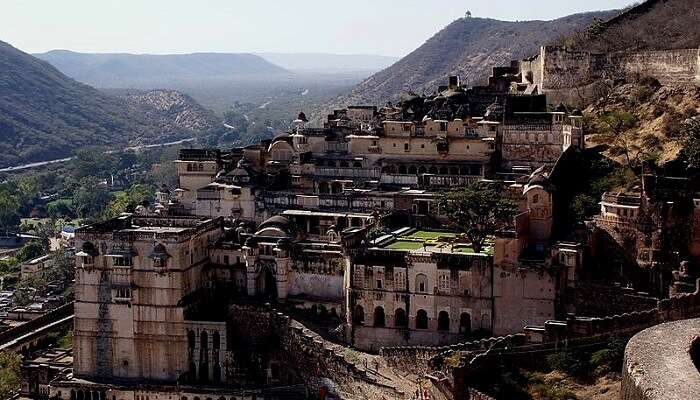
Another architectural marvel sitting in Rajasthan is the Taragarh Fort which adorns one of the most impressive structures in the entire region. Sitting in Bundi, Taragarh Fort is also famed as the ‘Star Fort’ and offers the breathtaking cityscape of the entire Bundi. The stunning silhouettes of low and high Havelis against the backdrop of an open sky painted in the hues of red and yellow is certainly a sight to behold. Once the most beautiful structure, the fort is sadly now in ruins after centuries but still worth every penny. There are plenty of experiences and places hidden in the Taragarh Fort.
Location: Nahar ka Chauhatta, Bundi, Rajasthan, PIN-323001
Famous For: Majestic views
Neemrana Fort, Neemrana- A Luxurious Escape

Often regarded as one of the best getaway destinations for those seeking a long drive, Neemrana Fort is as magnificent and luxurious as a fort can get. Constructed in the 15th century, the Neemrana Fort is an epitome of beauty. It is situated in the Aravalli Ranges and is used as an extremely luxury resort in the present day. Spread over 10 hectares of land, this fort showcases the perfect blend of traditions and modernity in Rajasthan. One can even relish the best of Rajasthani and French cuisines in this destination!
Location: 15th Century, Delhi-Jaipur Highway 122nd Milestone, Delhi – Jaipur Expy, Neemrana, Rajasthan, PIN-301705
Famous For: One of the most lavish forts in the country
Jhansi Fort, Jhansi- Rani Lakshmi Bai Fort

Rani Jhansi Ka Quila or Jhansi Fort is among the really old forts in India. It is more than 400 years old and flaunts an architectural mesh of Bundela and Maratha styles. After many poor reigns, it was ruled by Raja Gangadhar Rao and Rani Lakshmi Bai.
Location: Jhokan Bagh, Jhansi, Uttar Pradesh, PIN-284002
Famous For: One of the oldest forts in India
Gwalior Fort, Madhya Pradesh
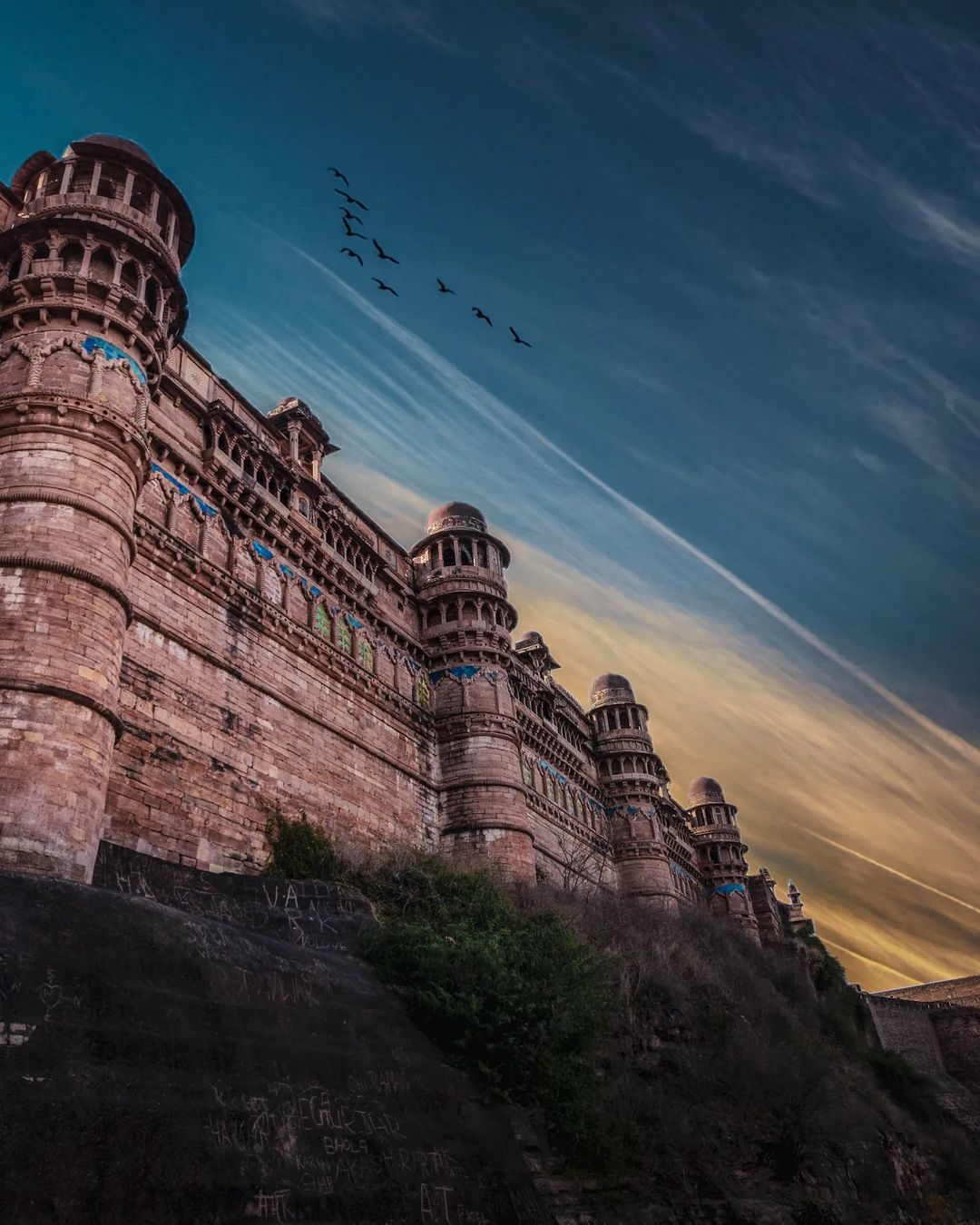
Believed to have existed since the 6th century in Madhya Pradesh, the hill fort has a very long and turbulent history witnessing several rulers and violent attacks. The fort which was captured by the Tomars in 1398 was built to its current grandeur during the reign of the Rajput Tomar dynasty.
It houses several historic monuments, palaces, temples and water tanks. Amongst it, the most acknowledged palaces are the Teli-Ka-Mandir, built in the Dravidian style and Man Singh Palace, built by king Man Singh in the 15th century.
Other notable structures in the majestic Gwalior Fortress are the Karan Palace, the Gujari Mahal., the Jahangir Mahal and the Shahjahan Mahal.
Location: Gwalior, Madhya Pradesh, PIN-474008
Famous For: One of the largest forts in India
Madan Mahal Fort, Jabalpur

The ruins of Madan Mahal Fort are not something very artistic or delicate, but the ruggedness surely does intrigue. For those who love losing themselves in the worn-out stoned walls, this can be the best fort in India for them. This 11th-century fort narrates the tales of Rani Durgavati, who was considered an Indian martyr and died fighting the Mughals.
Location: near Takshila College, Gurudev Colony, Jabalpur, Madhya Pradesh, PIN-482001
Famous For: A fascinating reflection of Rani Durgavati’s historical tale
Raigad Fort, Raigad- Beautiful Fort By The Marathas

One of the best forts in India, Raigad Fort was commissioned by Chhatrapati Shivaji, who made it his capital in the early days of his reign. The fort is located 820 metres above sea level, and the views of the mist-laden Sahyadri Range are mesmerizing. Also, it is among the popular trekking destinations near Mumbai and Pune.
Location: Raigad, Maharashtra, PIN-402305
Famous For: A popular trekking destination
Daulatabad Fort, Maharashtra- Standing On Conical Hill

Daulatabad Fort is just 16 km away from the city of Aurangabad and is regarded as one of the Seven Wonders of Maharashtra. The fort stands on a conical hill and is mainly known for serving as a capital for Tughlaq Dynasty. As you’ll explore the fort, you’ll come across many meandering secret passages which helped in tricking the attackers.
Location: Daulatabad, Maharashtra, PIN-431002
Famous For: Well-renowned as one of the seven wonders of Maharashtra
Rajmachi Fort, Khandala – Hills, Waterfalls, And Mist

Counted among the most favourite weekend getaways from Mumbai and Pune, Rajmachi Fort is a scenic delight, located amid the Sahyadri Range of Western Ghats. It was built by the Satavahanas and played an important role in the Anglo-Maratha war. After being ruled by Shivaji Maharaj, Aurangzeb, and then Kanhoji Angre, it was finally acquired by the British in 1818.
Location: Khandala, Lonavla, Maharashtra
Famous For: Awe-inspiring views with lush greenery all around
Chitradurga Fort, Karnataka – Picturesque Marvel From 17th Century
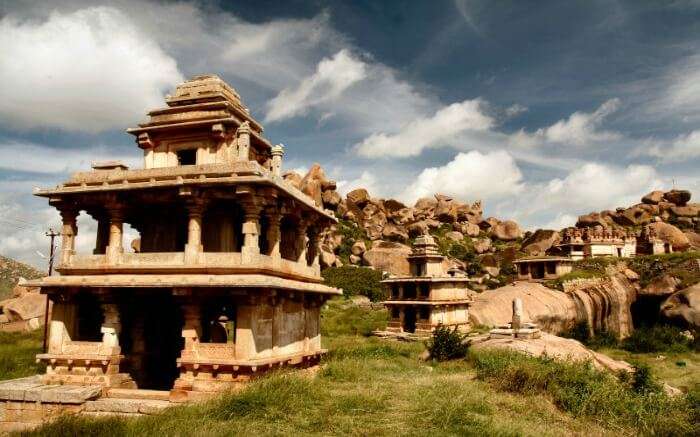
A Three-hour drive from Bangalore, Chitradurga Fort boasts pristine environs and a legendary past. The 17th-century marvel derives its name from the Kannada word Chitrakala Durga, which means ‘picturesque’. It is said there never had been a water shortage, thanks to many interconnected water tanks. Along with citadels and mosques, Chitradurga Fort has 18 temples.
Location: Chitradurga, Karnataka, PIN-577501
Famous For: Houses, 18 temples, mosques, and citadels
Srirangapatna Fort, Karnataka- Pride Of Karnataka
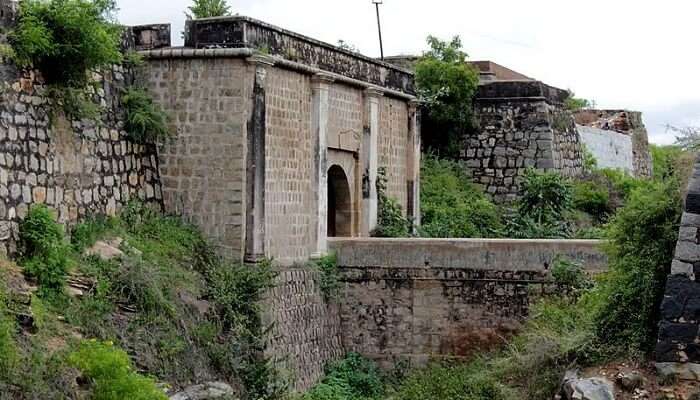
Often taken as the finest example of the Indo-Islamic architectural style, Srirangapatna Fort is the pride of Karnataka. Constructed in the year 1537, this fort was once a residence of the famous Tipu Sultan. There are a total of two dungeons that can be explored in the lower chambers. This fort is truly magical for all the historians out there. The grand paintings on the walls of this fort are truly marvellous. They depict the tale of the victory of the Tipu Sultan over the British.
Location: Srirangapatna, Karnataka, PIN-571438
Famous For: Features the Indo-Islamic architectural style
Golconda Fort, Hyderabad– Displaying Architectural Brilliance
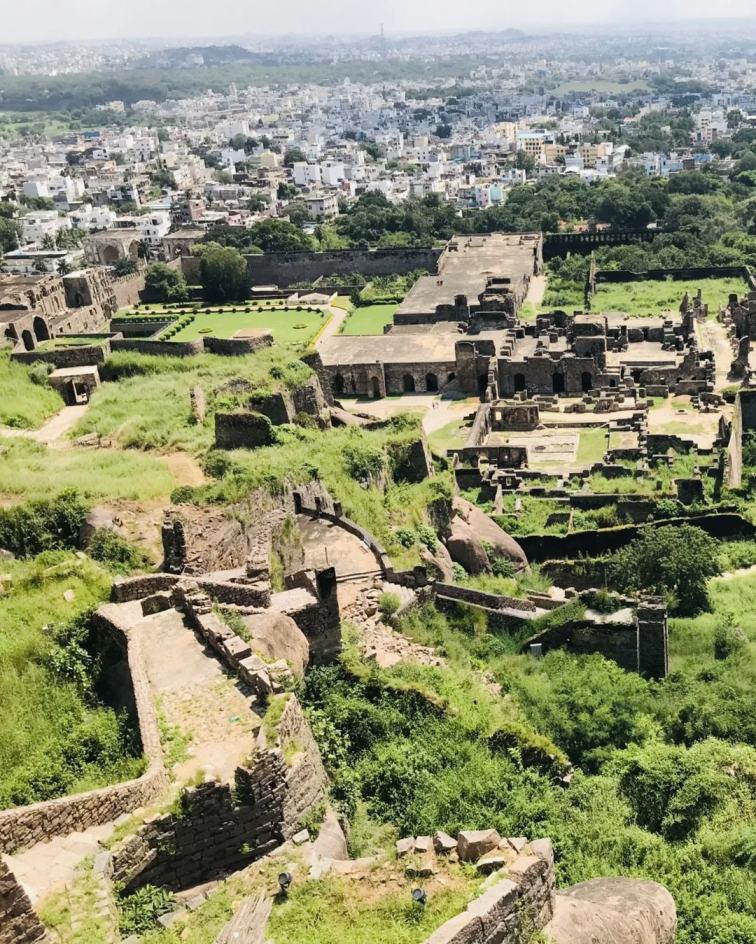
The iconic fort located in Hyderabad, Telangana, was built by Kakatiya Kings and once was the capital of the ancient Golconda Kingdom. The name Golconda derives from the Telugu words “Golla Konda” meaning “Shepherd’s Hill”. This unique fort had witnessed the rule of several dynasties like the Yadavas of Deogiri and the Kakatiya dynasty of Warangal.
The fort was known as a prominent diamond market in the 17th century and is world-famous for producing one of the finest gems in the world — the Koh-i-Noor Diamond. It houses several beautiful structures like beautiful palaces, gateways, drawbridges, temples, mosques, royal apartments, halls, and stables. Also, it houses the famous Fateh Rahben gun, one of the cannons used in the last siege of Golconda by the Mughal emperor Aurangzeb, to whom the fort ultimately fell in 1687. The fort’s fascinating history, its colossal structure and well-maintained gardens make it truly a delight for tourists.
Location: Khair Complex, Ibrahim Bagh, Hyderabad, Telangana 500008
Famous For: Wondrous architecture
Warangal Fort, Telangana – Emblem Of Telangana
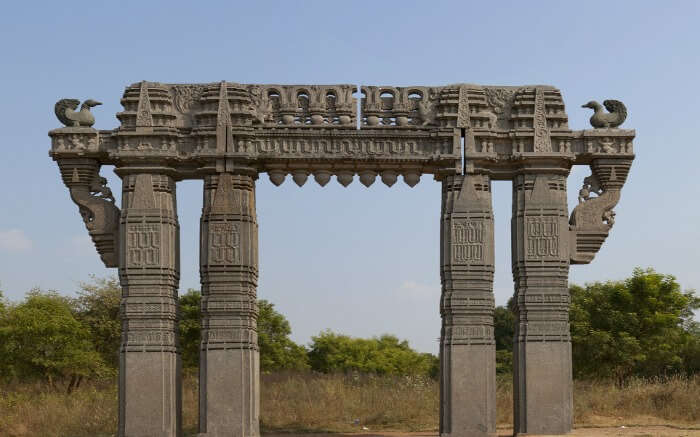
Warangal Fort is among the important forts of India because of its ornate arch, known as Kakatiya Kala Thoranam, which is adopted as the official emblem of the Telangana state. This ornamental arched gateway along with three others formed the gateway to the Shiva Temple, which today lies in ruins. Historians believe that the fort was built in the 12th century, and has been under the rule of Yadava Kings and the Kakatiya Dynasty.
Location: Mathwada, Warangal, Telangana, PIN- 506001
Famous For: Holds immense historical significance
Panhala Fort, Kolhapur- The One With Double Walled Gates
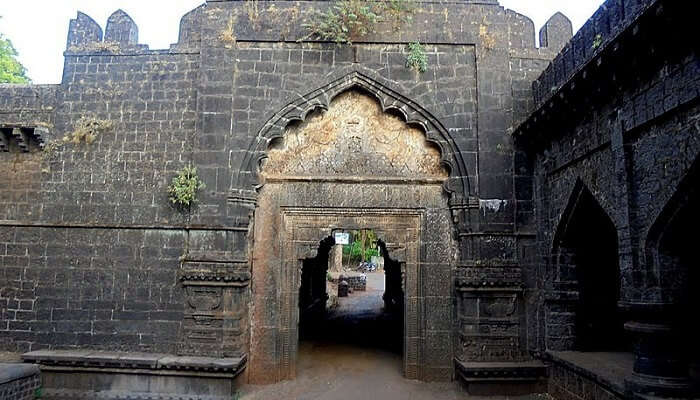
Famous for being the largest fort in the entire Deccan region, Panhala Fort is among the best places to visit in Kolhapur. Exhibiting the panoramic views of the green landscapes, this fort adorns around 7 km of fortifications. The double-walled gigantic gates showcase the architectural styles from the centuries-old era and act as a magnet for all the architecture lovers out there. From Marathas to Mughals, one can witness the motifs from varied dynasties that have ruled over this fort!
Location: Panhala Fort, Panhala, Maharashtra, PIN- 416201
Famous For: One of the largest forts
Visapur Fort, Khandala- An Escape From The City Life

Another one of the hill forts sitting in the heart of the lush greens of Khandala, Visapur Fort is an idyllic getaway for those who wish to escape the city life in Mumbai or Pune. Offering some of the finest landscapes under an open sky, this fort is a popular destination amongst trekkers as well. The misty surrounding, sounds of a refreshing waterfall gushing, and the foliage greener than ever combine to offer the most impeccable experience here. This was the fort constructed under the command of Balaji Vishwanath, the very first Peshwa of the then Maratha Empire.
Location: Malavli, Maharashtra, PIN-410406
Famous For: Lush green environs
Murud Janjira Fort, Raigad- The Strongest Sea Forts

Once counted among the mightiest marine forts in India, Murud Janjira lies in ruins, but its cragginess doesn’t fail to captivate. The 26 bastions of the fort have always been the way they are currently. There are many Indian and European cannons sitting on the bastions, placed to fight the enemies. As of today, they are rusted and mainly used for posing for pictures.
Location: Raigad, Maharashtra
Famous For: One of the mightiest marine forts in the country
Sindhudurg Fort, Maharashtra- Mighty Fortress On The Shore

Sindhudurg Fort is a 17th-century fort that lies on an islet in the Arabian Sea and houses the only temple in the world dedicated to Shivaji Maharaj, who constructed this fort. Visit here to be mesmerized by the massive walls, the 3 km long rampart, and the lovely view of the sea.
Location: Malvan, Maharashtra, PIN-416606
Famous For: Scenic sea views
Fort Aguada, Goa- The Sea View fort
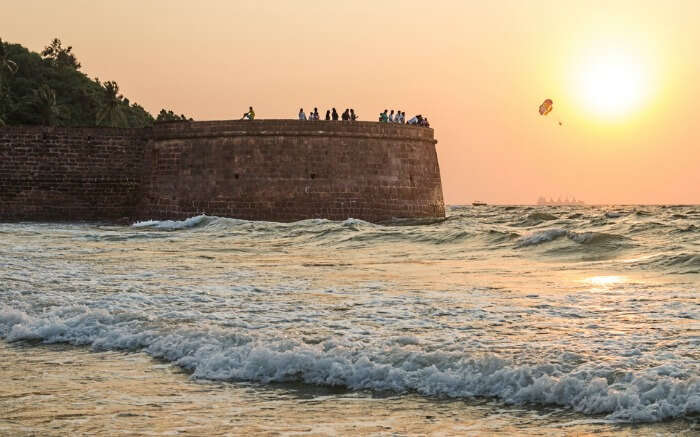
Aguada, which means water, gets its name from a freshwater spring within the fort, which was the source of water that was supplied to halting ships. Popularized by the Aamir Khan movie Dil Chahta Hai, Fort Aguada, today, is one of the most popular tourist places in Goa. The 17th-century Portuguese Fort was built to ensure security from the Dutch and the Marathas.
Location: Fort Aguada Rd, Aguada Fort Area, Candolim, Goa, PIN-403515
Famous For: Portuguese architecture
Chapora Fort, Bardez, Goa- Akbar’s Base Camp
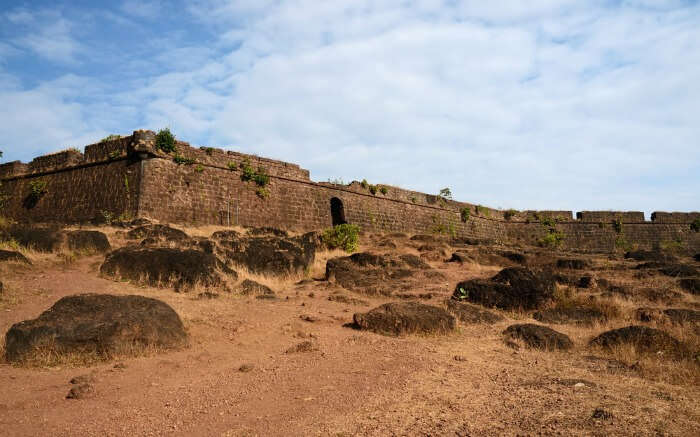
Chapora fort is named after the river Chapora and is one of the historically important forts in Goa. In 1638, when Akbar joined hands with the Marathas to kick out the Portuguese, he made fort Chapora his base camp. The current design we see is a 1717 construction that replaced older designs.
Location: Chapora Fort Trail, Vagator, Goa, PIN-403509
Famous For: One of the most historically significant forts
Bekal Fort, Kerala
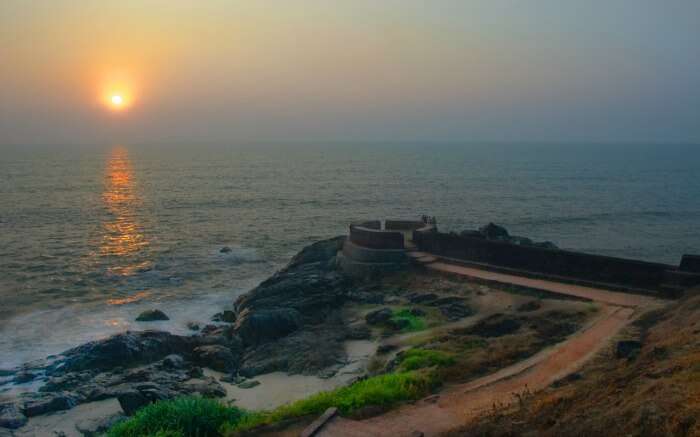
One of the largest forts of India, Bekal Fort is a 300-year-old marine fort. This keyhole-shaped structure was built for defence purposes back in 1650, by Shivappa Nayaka. Today, Bekal Fort is a preferred shooting spot for filmmakers, and The Observation Center offering a bird’s eye view of the surrounding is a tourists’ favourite. Amongst all the famous forts in India, Bekal Fort offers a clear glimpse into India’s history and an overall majestic experience.
Location: Kasaragod Road, PO Bekal Fort, Beside Bekal Fort Railway Station Dist, Bekal, Kerala, PIN-671316
Famous For: One of the largest forts in India
Palakkad Fort, Kerala- Blend Of History And Nature

One of the well-preserved forts in India, Palakkad Fort is also known as Tipu’s Fort. It is nestled in the foothills of Western Ghats’ Sahyadri Range and is enveloped by thick forests with river streams. It is said that the fort has been around since ancient times, but recorded history says it was built in 1766 AD by Haidar Ali.
Location: Palakkad-Koduvayur, Thathamangalam-Meenakshipuram Highway, Kenathuparambu, Kunathurmedu, Palakkad, Kerala, PIN- 678001
Famous For: Picturesque surroundings and stunning views of Western Ghats
Leh Palace, Ladakh
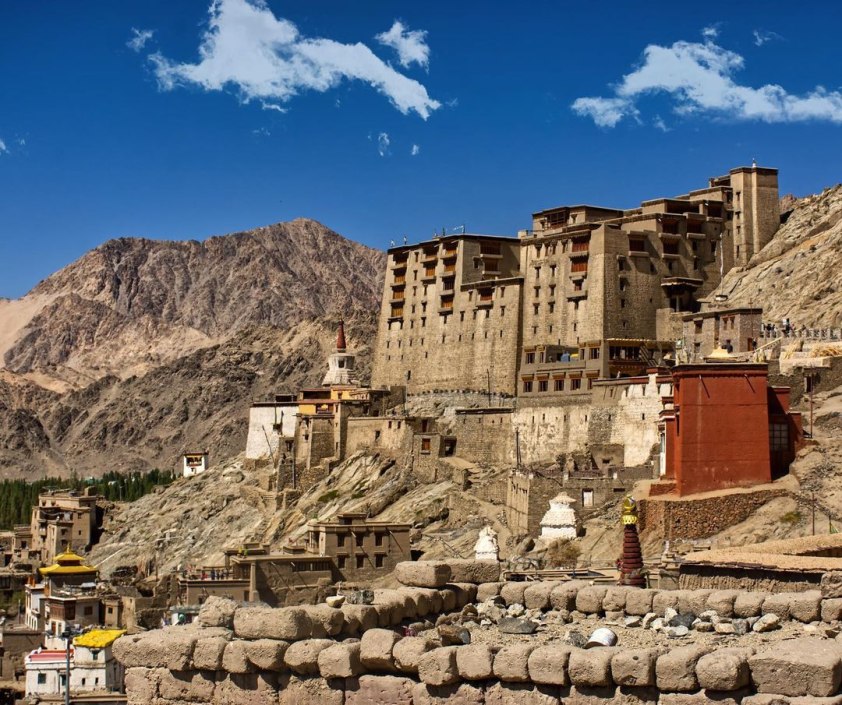
The Leh Palace also known as the Lachen Palkhar is a historical palace that looks over the town of Leh-Ladakh amid the spectacular Himalayan mountain range. The massive nine-story stone structure was built by King Senge Namgyal during the 1500s and completed by the 17th century. The palace has huge walls and wooden balconies and is a typical example of medieval Tibetan architecture.
The palace museum has a fascinating collection of ornaments, jewellery, crowns and ceremonial dresses along with Tibetan paintings or Thangkas, which date back to 450 years. The structures surrounding the palace base include the Namgyal Stupa, the mural-filled Chandazik Gompa and the Chamba Lhakhang Temple carrying medieval mural fragments.
Lakshmi Vilas Palace, Gujarat
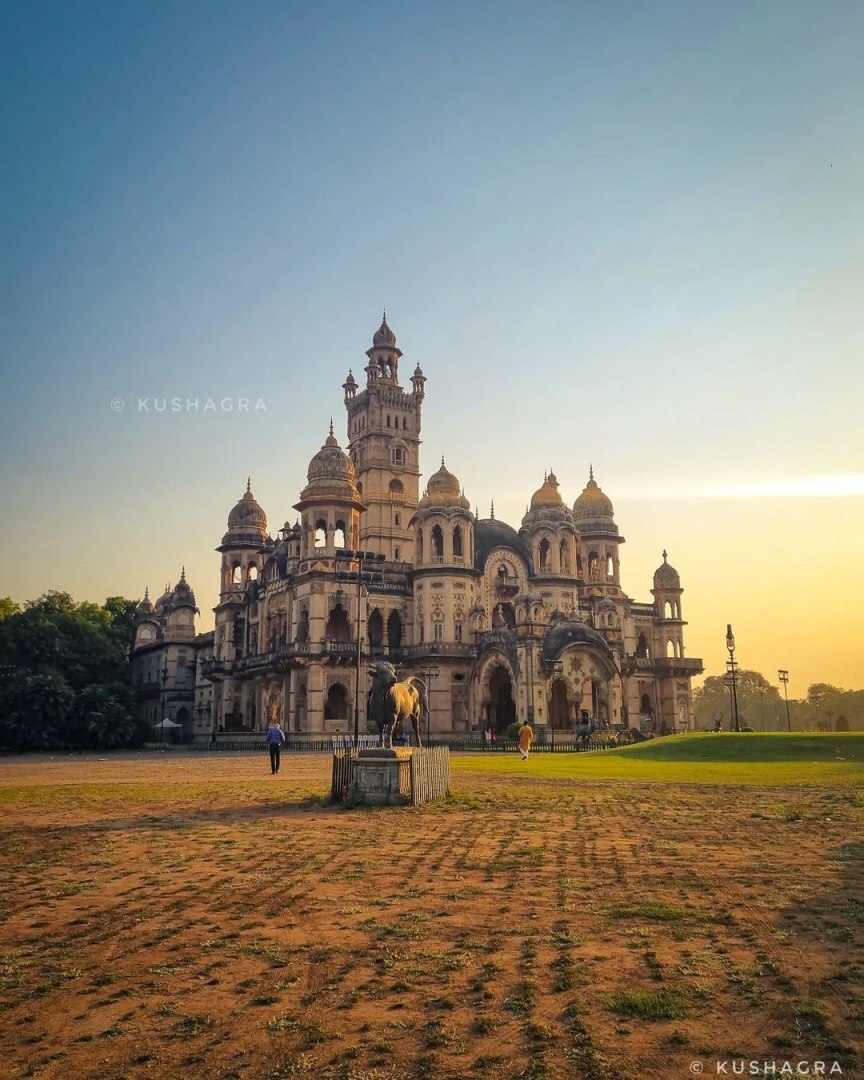
The residence of the royal family of Baroda, the Lakshmi Vilas Palace was built by Maharaja Sayajirao Gaekwad III in 1890, with Major Charles Mant as the chief architect. The palace houses several historical structures like the Moti Baug Palace and the Maharaja Fateh Singh Museum building. It is also home to the Moti Bagh Cricket Ground, the offices of the Baroda Cricket Association and rare indoor teak floored tennis court and badminton court.
Built in over 500 acres, it is said to be four times the size of Buckingham Palace. The elaborate interiors boast well-maintained mosaics, chandeliers and artworks, as well as a highly impressive collection of weaponry and art.
Ujjayanta Palace, Tripura
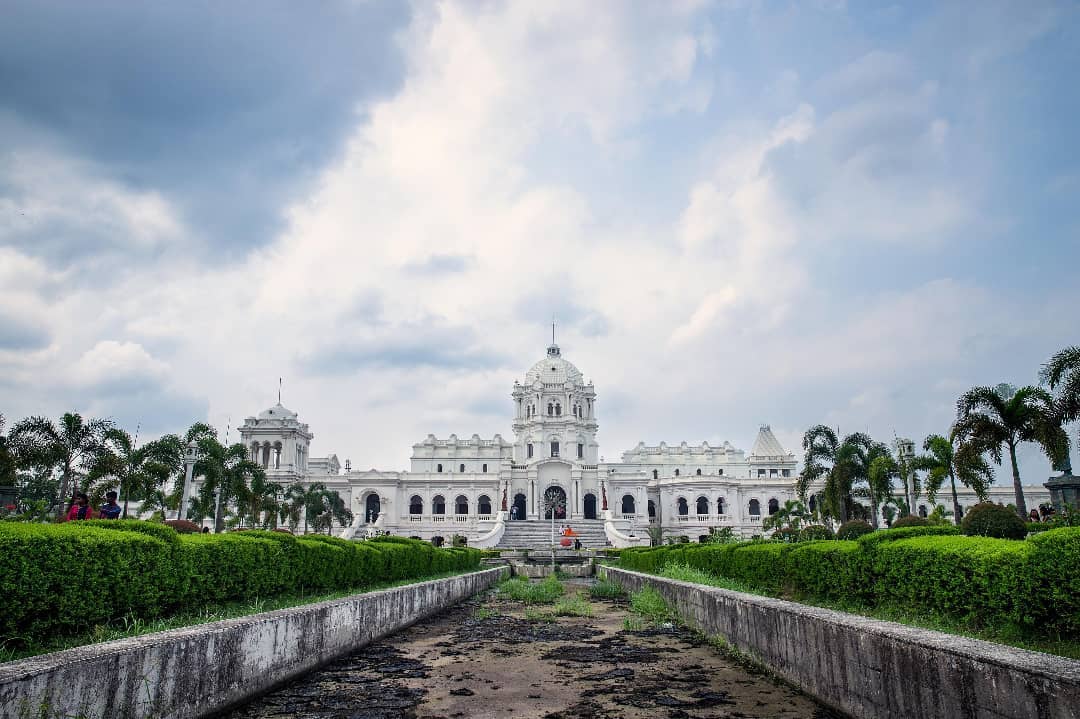
Situated in the heart of Agartala city, the Ujjayanta Palace was built by Tripura king, Maharaja Radha Kishore Manikya of the Manikya dynasty, between 1899 and 1901. Later it was purchased from the royal family by the Tripura government in 1972-73.
Named by Nobel Laureate Rabindranath Tagore, the palace houses public halls, a throne room, a Durbar hall, a library, a reception hall and a Chinese room. Now a state museum, the three-storeyed mansion has mixed architecture and is surrounded by serene Mughal gardens.
Mysore Palace, Karnataka
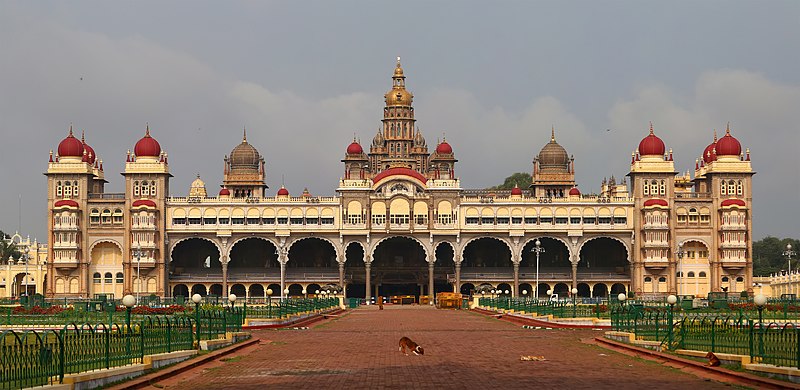
The Mysore Palace also known as the Amba Vilas Palace is one of the most prominent tourist destinations in Karnataka. It was built in 1912, in the Indo-Saracenic style, a combination of Hindu and Saracenic features. Commissioned by Krishnarajendra Wadiyar IV, the current palace is a replacement for the old wooden building destroyed by fire in the late 19th century.
Presently converted into a museum, the palace was constructed by Henry Irwin, a British architect. It is a three-storey stone structure in fine granite, grey in colour, having deep pink marble stones atop and a five-storey tower measuring 145 ft.
Padmanabhapuram Palace, Tamil Nadu
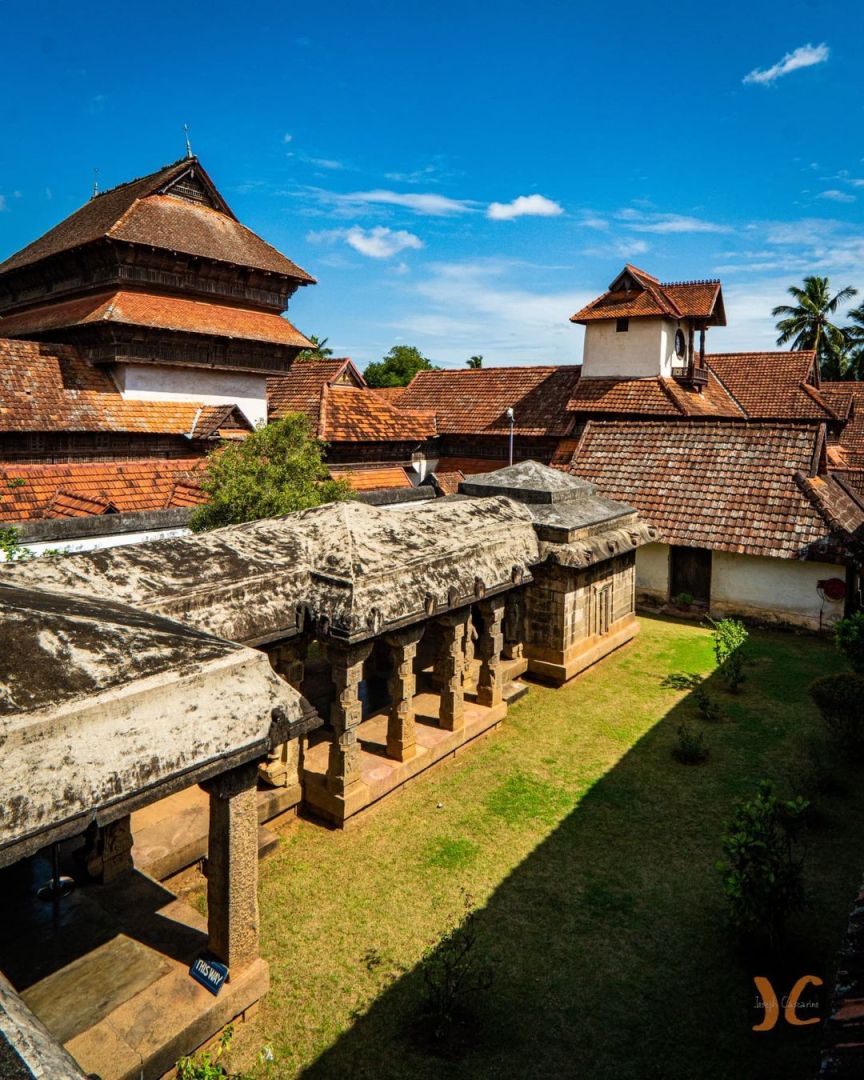
Located in a small village, Padmanabhapuram in the Kanyakumari District of Tamil Nadu, the palace was once the seat of the powerful Venad Kingdom that ruled over the southern regions of the present Kerala state. The palace enclosed within a fort covers an area of 6 acres and represents the indigenous architectural features of Southern Kerala.
The Padmanabhapuram Palace is over 400 years old and is considered one of the largest wooden palaces in Asia. Wood is used extensively in its walls, roof frame, and also in structural elements such as pillars and beams. Besides, the palace interiors are decorated with antiques like Belgian mirrors, intricate carvings and paintings on its ceilings, the 17th and 18th-century murals, rosewood and teakwood carvings, and huge earthen urns and coloured mica on windows.
Financial and Business expert having 30+ Years of vast experience in running successful businesses and managing finance.





